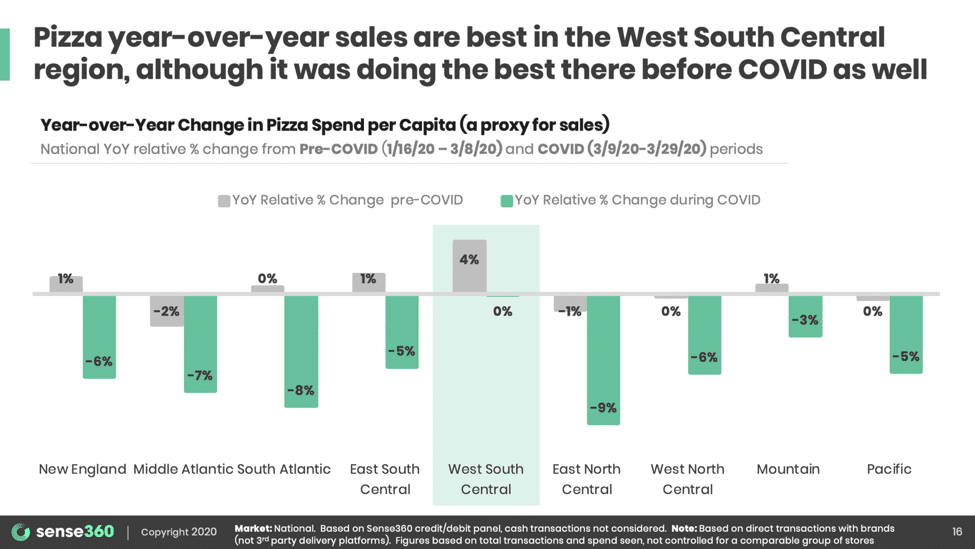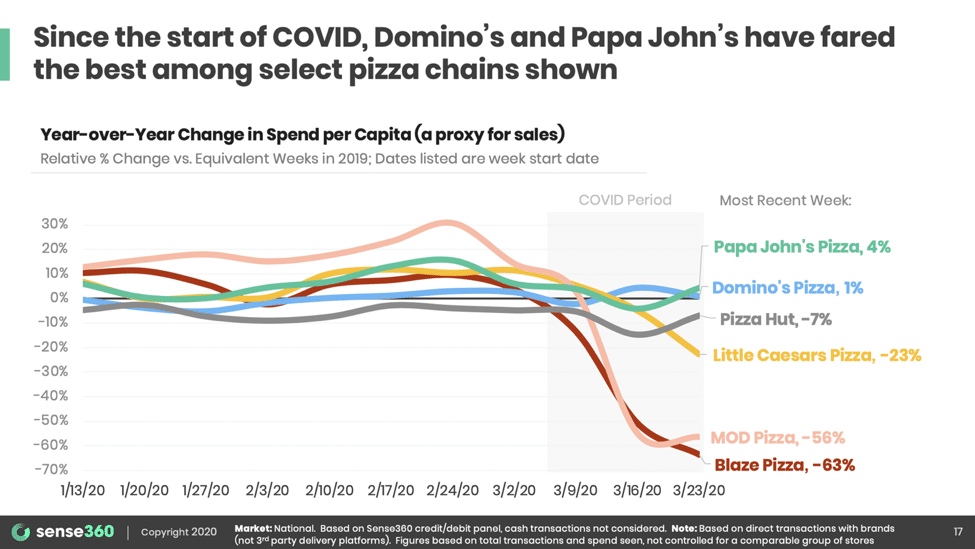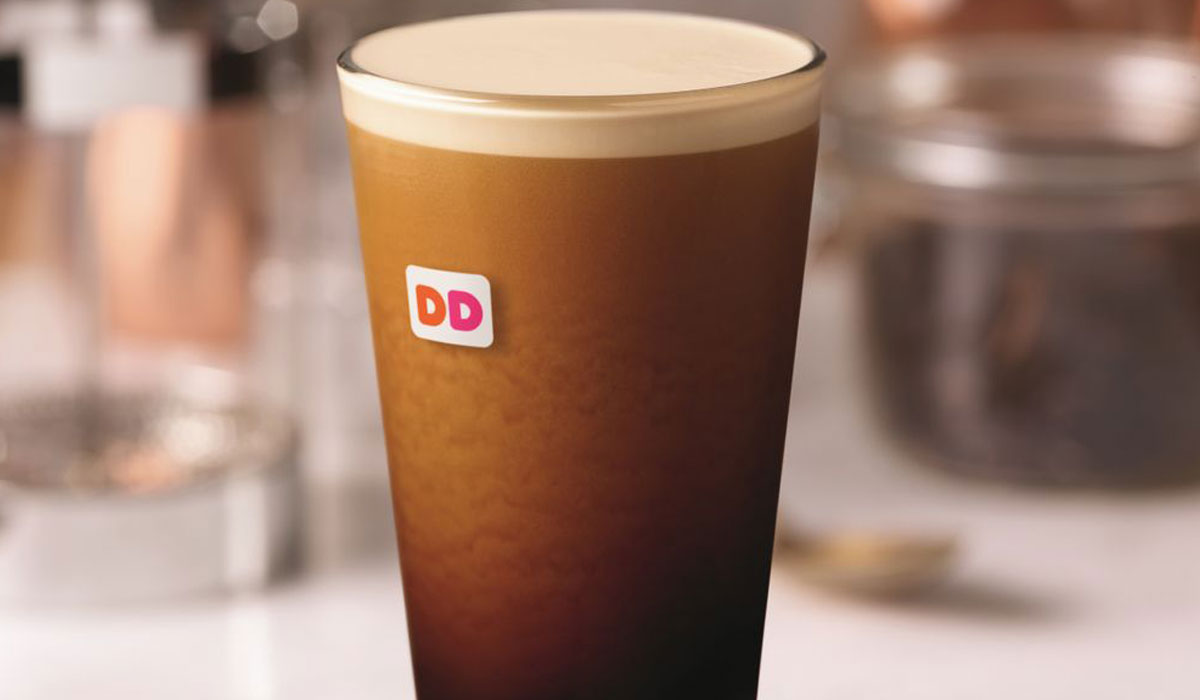Wendy’s CEO Todd Penegor put it plainly. “The breakfast daypart across the industry has been hit very hard,” he said Wednesday during the burger chain’s Q1 recap. McDonald’s CFO Kevin Ozan held a similar view, noting there’s been “a disruption to routines.” Dunkin’ and Starbucks have shared much of the same in recent weeks.
The issue at hand is apparent. A record-breaking 20.5 million jobs were lost in April as the unemployment rate rose to 14.7 percent, according to the Bureau of Labor Statistics. It’s the highest level of unemployed workers in America since the Great Depression. And 5.5 million of those came from restaurants.
For operators, this means there are far fewer customers headed to work in the morning, to put it lightly. COVID-19 shattered the solo occasion so many early morning brands covet—the consumer who grabs a coffee and a bite to eat as they commute. Breakfast, historically, is one of the most competitive hotbeds for quick-service restaurants for just this reason. It’s a habitual purchasing pattern that sticks. It’s very hard to grab share from customers loyal to one brand or another. Also, breakfast products themselves tend to be of the high-margin ticket variety, and more profitable than lunch and dinner. This is especially true of coffee. Hot-drip coffee in particular. So much so that Panera was willing to launch an $8.99 monthly subscription to capitalize on food attachment. In early tests, it witnessed a 70 percent increase in food attachment for subscribers—value the brand said was in the “double-digits.”
For further proof, look at Wendy’s, which drew a $70 million to $80 million marketing calendar in 2020 just to launch breakfast and raise awareness. COVID-19 washed the budget, but Penegor said pre-pandemic efforts still got the figure to 50 percent, and the daypart is mixing at 8 percent of current sales. “It has also proven to be profitable, even at lower sales levels than we had anticipated,” he said.
Placer.ai, a mobile location analytics platform, ran some breakfast-centric data exclusively for QSR to examine how foot traffic trends have changed during the crisis.
It compared March and April 2019 to the same timeframes this year. Naturally, traffic is down across the board. But looking at specific times throughout the day paints a different picture for different brands. In some cases, the company said, it emphasized where their true strengths could lie post COVID-19.
Starting with coffee, in March/April 2019, Dunkin’ saw 9.5 percent of its customers visit between the hours of 10 to 11 a.m. And 27.6 percent of total daily visits flowed from 10 a.m. to noon. Shifting to 2020, results are holding steady. From March to April, it witnessed 9.2 percent of its traffic from 10 to 11 a.m.—just a 0.3 percent decrease from the previous year.

This suggests many of Dunkin’s efforts to boost daylong service, especially with promotions, espresso, cold drinks, and snack items, have translated in a COVID-19 landscape.
Dunkin’ said during its Q1 review that same-store sales declined 35 percent at the end of March and into early April, with more recent drops hovering around 25 percent. “With customers’ daily morning routines disrupted, we are seeing a shift in sales across dayparts,” CEO Dave Hoffmann said. “Sales volumes in the early morning are down but have picked up from 10 a.m. to 2 p.m. as people venture out for a break.”
The main decline, he added, was taking place in the 6 to 9 a.m. part of Dunkin’s business. “But we’ve seen a nice uptick on the 10 a.m. to 2 p.m. So we’re positive in that timeframe,” Hoffmann said. “Whether that’s people are getting a little cabin fever and they want to come out for their cup of coffee or whatever, we feel like we’ve been able to capture that.”
The overall sales decline, however, shows how critical getting morning routine customers back will be to Dunkin’. Hoffmann said they’re already working on a “welcome back thank you to America,” type of campaign when the ramp-up phase really kicks into gear. And Dunkin’ will pay attention to what the “new normal” looks like in terms of customer trends.
Hoffmann mentioned the possibility of the starting hour for people moving up as they elect for their own cars over public transportation. “We think we’ve got a business model that is nimble and is built for what the new reality—whatever it’s going to look like, we’re ready to adapt and win in that environment,” he said.
Hoffmann added it would be critical for brands to focus on ways to bring back morning rituals in a post-pandemic world. In Dunkin’s case, a low-touch, affordable-ticket business model. Frictionless ordering. Incentives to use contactless mobile ordering through the app. Curbside. Drive thru. More delivery. And so on.
Placer.ai found Starbucks is welcoming most of its visits in the afternoon hours. In 2019, 9.2 percent of its visits in March and April came from 3 to 4 p.m. It’s bumped to 9.9 percent in 2020.
These past two crisis months, Starbucks saw 20.3 percent of its daily visits between 8 to 11 a.m., compared to 19 percent in 2019. So it’s actually up a bit, although this is a percentage of total visits, not the amount of overall visits, which is down considerably. Panera Bread’s visits only decreased 0.4 percent for the morning hours of 8 to 11 a.m., from 14.6 percent to 14.2 percent of overall visits.

Starbucks COO Roz Brewer echoed this in April. Speaking about rewards members, she said they’ve remained roughly 44 percent of the company’s business. The majority—about 70 percent—are frequent users. They’ve still shown up during COVID-19, just less frequently.
But to Placer.ai’s data, there’s been the same frequency loss across all dayparts for the most part, in Starbucks’ case. “It’s a little bit more pronounced in the morning but that’s to be expected because the routines have been disrupted,” she said, adding “we believe that these highly resilient customers will come back to us.”
International group president John Culver said the company’s China business expects mornings to recover as people return to offices, schools get back into session, and customers “get more back into routinized behaviors.”
Like Dunkin’, Starbucks is gearing up for what that world might look like so it’s ready to supply demand when it spikes; to be in position to help consumers embrace the habits they’ve vacated during quarantine life.
The company, as of Friday, had 85 percent of its corporate restaurants back on line. The service model is different store-by-store across the country. Starbucks said almost 20 million customers are using the app, which facilitates optimized curbside pickup, entryway handoff, improved drive-thru experiences, voice ordering through Siri, and the ability to earn stars that can be redeemed for rewards. It anticipates that contactless payment through the app will be the most-used form of payment going forward. Only 30 or so stores are currently café open and order, and none of them have seating.
The entryway handoff is a new technique, as is curbside access, which Starbucks is exploring in locations where parking is available.
Starbucks was one of the first chains to shutter its dining rooms for takeout and delivery, but struggled with crowd control and decided in mid-March to go to drive-thru only across its system. The safety-fueled decision hit Starbucks to the tune of $915 million, the company said. Same-store sales were down 65–75 percent out the gate. They improved to negative 25 percent in April as drive-thru business boosted trends (58 percent of Starbucks’ 9,000 domestic corporate units have drive thrus). The company expects more than 90 percent of its restaurants to be open by early June.
The fast-food conversation
Unlike Dunkin’ and Starbucks, frequency changes have hit harder for fast-food leaders. McDonald’s and Burger King saw tangible drops during breakfast rush hours, according to Placer.ai. In 2019, 15 percent of McDonald’s customer visits came during the 8 and 11 a.m. timeframe. In 2020, it dropped to 12.5 percent. Burger King went from 11 percent to 9.4 percent. “With fewer people on the road during their usual morning commute, it’s clear that breakfast is being negatively impacted in some cases,” Placer.ai said.

As noted before, McDonald’s understands breakfast is going to be a street fight post COVID-19. The daypart has traditionally mixed 25 percent of the fast-food giant’s sales. “Reestablishing those routines does take time, but we plan to be very aggressive and make sure that we get back the breakfast business. The breakfast business is a great part of our overall mix, and so, we are going to be putting a lot of effort against that,” Ozan said.
Jose Cil, CEO of Burger King parent Restaurant Brands International, said in the company’s quarterly recap, “dayparts like breakfast and snacking that fit into these routines have seen a disproportionate decrease, while lunch and dinner have shown more strength.” Throughout 2019, the company touted whitespace in the breakfast arena.
Of the fast-food chains analyzed by Placer.ai, Wendy’s presented a different narrative. This makes sense since the brand didn’t have breakfast this time last year. The 2020 version represented its fifth attempt at daypart expansion, the first coming in the 1980s. The most recent was about a decade ago, and stalled somewhere around 600–700 restaurants.

Visits between 8 and 11 a.m. accounted for just 3.4 percent of the company’s total visits in March/April 2019. It bumped to nearly 6 percent this year. “It’s clear that Wendy’s new breakfast menu is driving traffic and intrigue, even during a time of uncertainty,” Placer.ai said. “This is a very strong sign for their revitalized breakfast menu and could position the brand for a post-COVID surge.”
Before COVID-19, Penegor said breakfast drove same-store sales up 15 percent in its launch week. “While the environment we encountered as we started breakfast was not what anyone would have expected, the strength of our program makes this daypart a key bright spot for us,” Penegor said Wednesday. “It has performed well despite significant headwinds, which reinforces how excited customers are about having a great new breakfast option.”













